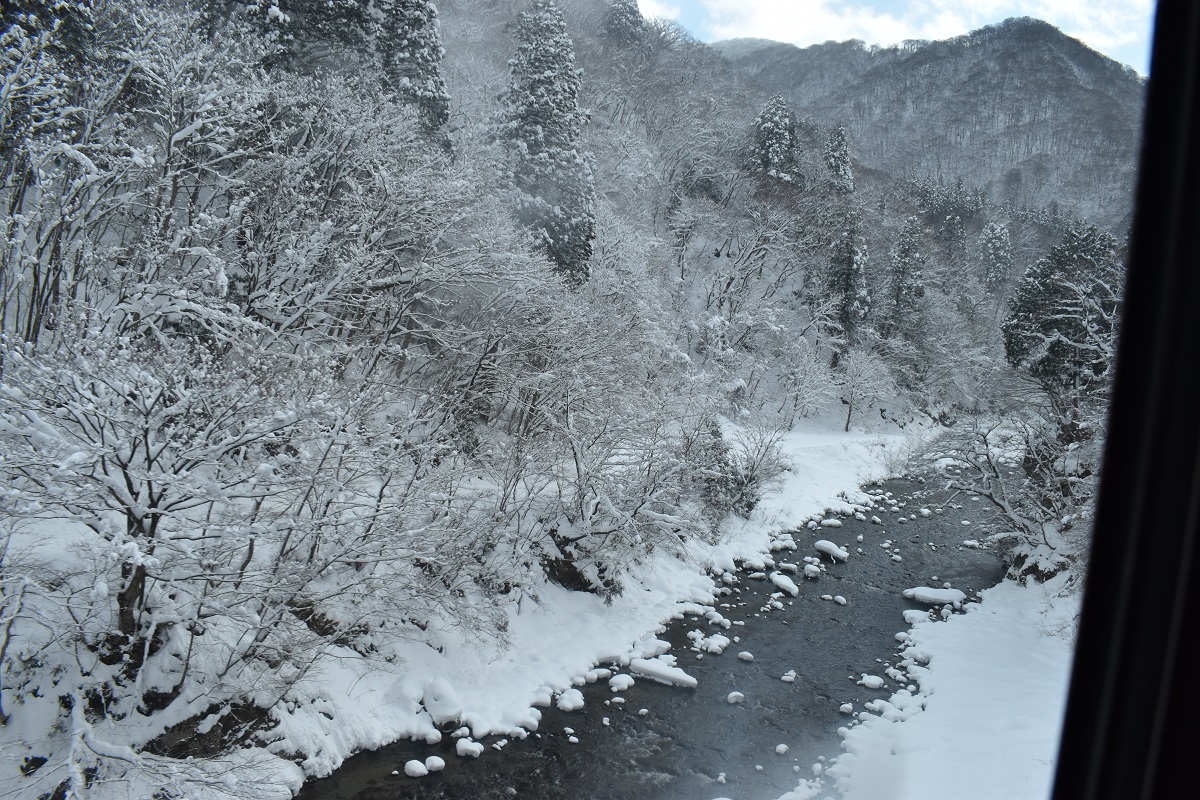
Immediately after the low-pressure system passed, strong winds blew away the leaves of the Washingtonian palm trees planted along the road, but the 20 meter tall trunks remained motionless. It is said that the founder of Miyazaki Kotsu Co.,Ltd. started planting trees as a tourist attraction, but pruning businesses in Miyazaki City now use cranes to carry out the heavy maintenance work. Nevertheless the work can’t keep up, chunks of skin are falling all over the town.
The Nichinan Coast, which is lined with Washington palm trees, is made up of layers of hard sandstone and soft mudstone that rise diagonally and have been washed by waves for long time. As a result, there are many landforms where only sandstone layers appear stacked up like plates. Due to its size, it is called the demon’s washboard, but it is a long time ago that laundry was scrubbed with a washboard by hands to remove dirt, and in the era of fully automatic washing machines, very few people were aware of this. Probably not. I think it might be a good idea to come up with a new name to replace the demon’s washboard.
There is a theory that in Aoshima, seeds that washed up from the Pacific Ocean germinated on the small amount of soil that had accumulated on this demon’s washboard, and subtropical plants flourished there. Aoshima Shrine is enshrined surrounded by these subtropical plants, and the vivid vermilion of the shrine, the vibrant deep green of the subtropical plants, and the blue of the sea that can be seen from the shrine create a color collaboration. This combination is special.
The myths surrounding Aoshima Shrine were written in the oldest classic, the Kojiki. Yamasachihiko, who borrowed a fishing hook from his brother Umisachihiko, dropped it in the sea and ended up at the Sea Palace looking for it. After living a rich life there for three years, he came back and returned the fishing hook to Umisachihiko, but the relationship between the two did not go well and there was some quarrel. However, it is a story that doesn’t quite make sense. Most Japanese myths don’t have a punch line, so you might be left with a feeling of being empty. Similarly, Rakugo, which tells a comic story just by copying the form of the voice, has a punch line at the end of the story, but it’s not as interesting as the middle of the story.

The only thing here is to enjoy the creations of nature, not myths. To do this, check the low tide time in advance and go sightseeing around that time. Otherwise, the demon’s washboard would be submerged in the sea. Some of the sandstone slabs have structures that make you wonder how they were eroded to form such patterns. However, when I look at the neatly lined sandstone slabs, am I the only one who notices that they look like mahjong tiles stacked on top of one another?
Detour 1 (Botanic Garden)
On the way from the parking lot to Aoshima inland, we passed a subtropical botanical garden. It really makes you feel like you’re in a tropical country. Admission is free.
Detour 2 (Chicen dishes)
Miyazaki’s specialty is chicken dishes. Charcoal-grilled chicken is cooked over a strong fire until it is charred and eaten with wasabi. Addictive taste. On the other hand, fried chicken “Nanban” is on the menu at all times of the day, and depending on the restaurant, different parts of the chicken are used, such as breast, thigh, or chicken fillet. The chicken fillet is the most recommended. Eat with special homemade tartar sauce. This makes it even more delicious. Please enjoy Miyazaki night!































